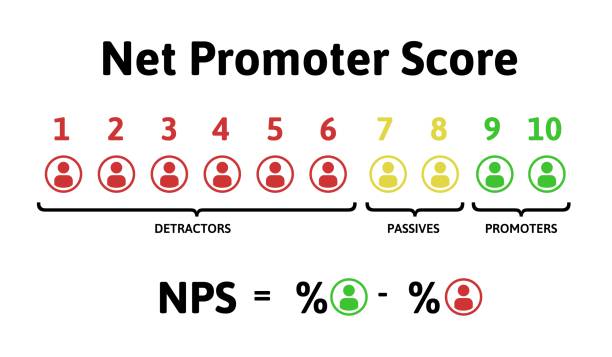Understanding NPS and Its Importance

Introduction
In the modern and fast-moving business world, its important to understand the customer satisfaction. One way to measure this is by using the Net Promoter Score (NPS). But what exactly is NPS and how to calculate NPS? This article aims to unpack this crucial metric, giving you the insights and knowledge to effectively measure your customer loyalty.
What is NPS?
Net Promoter Score (NPS) is a tool used to figure out how much our customers are loyal to us and are satisfied with our product. It poses a simple but effective question: “On a scale of 0-10, how likely are you to recommend our product/service to a friend or colleague?”
Understanding its importance
At its core, NPS helps businesses understand their customers better. Satisfied customers result in increased word of mouth in turn translating to more business.
By measuring NPS, companies can pinpoint areas for improvement and take proactive steps to enhance customer experiences.
Why NPS over other metrics?
NPS stands out because of its simplicity and direct link to customer loyalty. Unlike other complex metrics, NPS is straightforward and easy to interpret, making it a favorite among businesses of all sizes.
Basics of Calculating NPS
Before diving into the calculation, it’s essential to grasp the foundational concepts.
Classifying respondents
There are three categories for those who respond:
1. Promoters (9-10): Loyal enthusiasts who’ll keep buying and refer others.
2. Passives (7-8): Satisfied but indifferent customers.
3. Detractors (0-6): Dissatisfied customers at risk of spreading negative feedback.
Scoring system
The NPS is determined by taking away the detractors from the promoters, and can range from -100 to a 100.
Step-by-step Guide on How to Calculate NPS
Even though calculating NPS seems challenging, with the help of this guide, you can become an expert quickly.

Step 1: Gathering Feedback
Use surveys or feedback forms to gather responses to the standard NPS question. The more data, the better!
Step 2: Categorize the responses
Group responses into Promoters, Passives, and Detractors based on their scores.
Step 3: Calculate percentages
Determine the proportion of answers that belong to each group.
Step 4: Subtracting Detractors from Promoters
Subtract the Detractor percentage from the Promoter percentage to get your NPS.
Step 5: Interpretation
An NPS score above 0 indicates more promoters than detractors, which is good. A score above 50 is excellent, and anything above 70 is exceptional!
Step 6: Using NPS to Drive Action
Don not just calculate NPS and not do anything about it, Take the feedback to improve enhance the customer experience.
Step 7: Regularly reassess and adapt
Customer sentiments are unpredictable, and its essential to frequently check the NPS to stay up to date and guarantee improvement.
Common Mistakes in NPS Calculation
Calculating NPS isn’t rocket science, but some common pitfalls can distort your results.
Not segmenting data
Different demographics may have different feedback. Segmenting data into groups can help when trying to conduct a deeper analysis.
Neglecting open-ended feedback
While NPS is a quantitative metric, don’t forget to analyze the qualitative feedback provided by respondents.
Advantages of Using NPS
Using NPS has its perks, making it a valuable tool for many businesses.
Direct feedback loop
You can get feedback from customers directly which can help you customize products and services for them.
Predicting business growth
A high NPS often correlates with business growth as satisfied customers lead to referrals.
Pitfalls and Limitations of NPS
While NPS is powerful, it has its limitations.
Not a standalone metric
Never rely solely on NPS. Combine it with other metrics for a comprehensive analysis.
Limited qualitative data
NPS is largely quantitative. It’s essential to combine it with qualitative data for a holistic view.
Examples of NPS Usage
To bring it home, here are a couple examples showcasing the impact of NPS.
Company A’s Success Story
Company A diligently tracked their NPS and made data-driven decisions. Over time, they saw a direct correlation between their NPS score and revenue growth. Their continued effort in addressing customer feedback led to an increase in their market share.
Company B’s Adaptation Journey
Company B initially didn’t value NPS. However, after seeing competitors surge ahead, they embraced NPS. By focusing on feedback and adapting accordingly, they transformed detractors into promoters and saw a positive shift in their overall business performance.
FAQs
- What is the ideal NPS score?
While anything above 0 is good, an NPS score above 70 is considered world-class.
- How often should I measure NPS?
Regularly! Quarterly assessments are a good rule of thumb, but it varies depending on your business needs.
- Can NPS predict business growth?
Yes, a high NPS often correlates with higher customer loyalty, leading to increased referrals and business growth.
- Why is my NPS low?
A low NPS can be due to various reasons, from product issues to poor customer service. It’s crucial to delve into feedback and identify areas for improvement.
- How can I improve my NPS?
Focus on customer feedback, enhance their experiences, and address any concerns raised. Constant communication is key.
- Is NPS applicable to all industries?
While NPS is versatile, its relevance might vary. It’s essential to combine NPS with industry-specific metrics for best results.
Conclusion
Understanding how to calculate NPS is pivotal for businesses aiming to thrive in today’s customer-centric world. NPS isn’t just a number; it’s a reflection of your customers’ sentiments. Embrace the invaluable tool that is the NPS, and let it guide your business towards success.
External Links/ Sources:
How To Calculate Net Promoter Score: NPS Formula, Tools, & Tips
